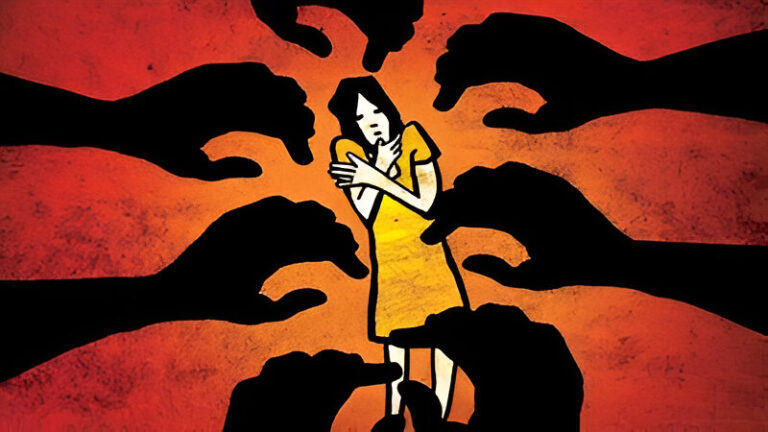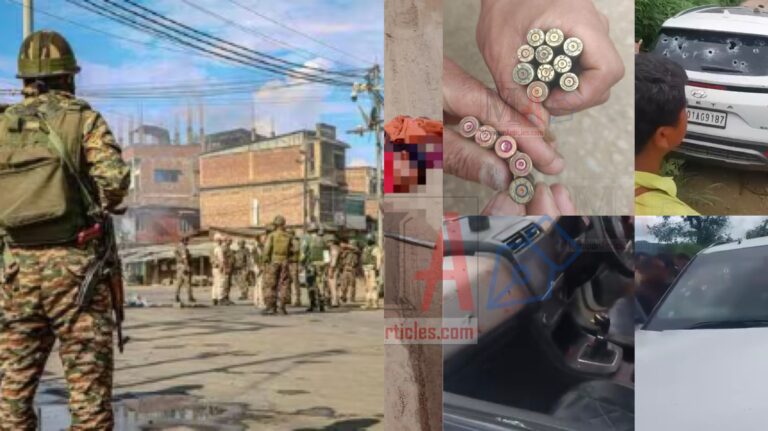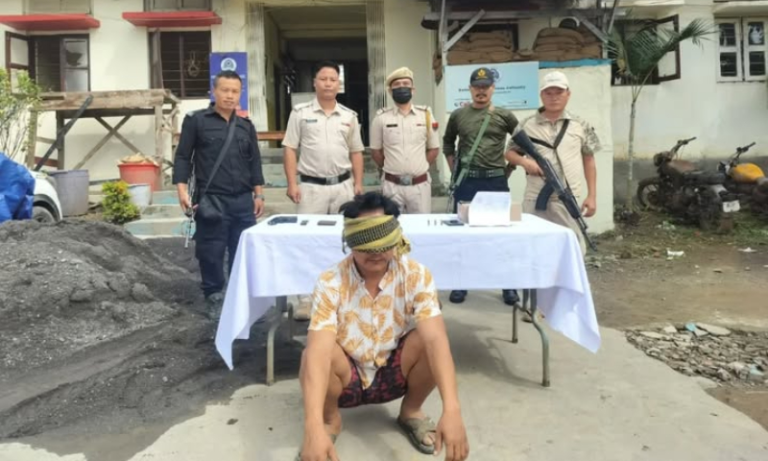Addressing the Silent Epidemic: Raising Awareness About Child Sexual Abuse in India
Summary
A disturbing case has come to light in Madhya Pradesh, India, where a 40-year-old man allegedly sexually abused his daughter for four years. The police have launched a manhunt to apprehend the suspect after the victim, now 20 years old, filed a complaint. This incident has once again brought the issue of child sexual abuse into focus, highlighting the urgent need for increased awareness, prevention measures, and support systems for survivors.
The Hidden Crisis: Understanding Child Sexual Abuse in India
Child sexual abuse is a deeply troubling issue that affects societies worldwide, and India is no exception. Despite being a topic that many find uncomfortable to discuss, it’s crucial that we bring this issue out of the shadows and into the light of public discourse. Only by confronting this problem head-on can we hope to protect our children and create a safer environment for them to grow and thrive.
The Scope of the Problem
To truly grasp the magnitude of child sexual abuse in India, we need to look at the statistics, as alarming as they may be. According to a 2007 study by the Ministry of Women and Child Development, over 53% of children in India have faced one or more forms of sexual abuse. More recent data from the National Crime Records Bureau (NCRB) shows that the number of reported cases under the Protection of Children from Sexual Offences (POCSO) Act has been steadily increasing year after year.
These numbers, however, likely represent only the tip of the iceberg. Many cases go unreported due to various factors, including social stigma, fear of repercussions, and lack of awareness about reporting mechanisms. The true scale of the problem may be far greater than what official statistics suggest.
Understanding the Impact
The effects of child sexual abuse are far-reaching and can last a lifetime. Survivors often struggle with a range of psychological issues, including:
- Post-traumatic stress disorder (PTSD)
- Depression and anxiety
- Low self-esteem and self-worth
- Trust issues and difficulty forming relationships
- Substance abuse problems
- Eating disorders
Moreover, the impact of child sexual abuse extends beyond the individual survivor. It affects families, communities, and society as a whole. The economic cost in terms of healthcare, social services, and lost productivity is substantial, not to mention the immeasurable emotional toll on all those involved.
Breaking the Silence: Why Talking About It Matters
One of the biggest challenges in addressing child sexual abuse is the culture of silence that often surrounds it. Many people feel uncomfortable discussing the topic, which can lead to a lack of awareness and perpetuate harmful myths and misconceptions.
By breaking this silence and openly discussing child sexual abuse, we can:
- Educate children about their rights and how to protect themselves
- Empower survivors to come forward and seek help
- Raise awareness among adults about the signs of abuse and how to report it
- Challenge societal attitudes that may inadvertently protect abusers
- Advocate for stronger laws and better support systems for survivors
Prevention Strategies: Building a Safer World for Our Children
Preventing child sexual abuse requires a multi-faceted approach involving individuals, families, communities, and institutions. Here are some key strategies that can make a difference:
Education and Awareness
Knowledge is power, especially when it comes to protecting our children. Comprehensive sex education programs that are age-appropriate can teach children about their bodies, boundaries, and what constitutes inappropriate behavior. These programs should also educate children about how to seek help if they ever feel unsafe.
For adults, awareness programs can help them recognize the signs of abuse and understand their responsibility to report suspicions. This includes training for teachers, healthcare professionals, and others who work closely with children.
Strengthening Family Bonds
Strong, supportive family relationships can be a powerful protective factor against child sexual abuse. Parents and caregivers should strive to create an open, trusting environment where children feel comfortable discussing their experiences and concerns.
Some ways to strengthen family bonds include:
- Regular family time and activities
- Open communication about feelings and experiences
- Teaching children about personal boundaries and respect
- Modeling healthy relationships and behaviors
Community Vigilance
Creating a culture of community vigilance can help deter potential abusers and provide an additional layer of protection for children. This involves:
- Neighborhood watch programs
- Community education initiatives
- Encouraging reporting of suspicious behavior
- Supporting local organizations that work to prevent child abuse
Institutional Safeguards
Schools, religious institutions, sports clubs, and other organizations that work with children have a crucial role to play in preventing abuse. This includes:
- Implementing robust background checks for all staff and volunteers
- Establishing clear codes of conduct and reporting procedures
- Creating safe environments with proper supervision
- Regularly reviewing and updating child protection policies
Legal and Policy Measures
While India has made significant strides in recent years with the implementation of the POCSO Act, there’s still room for improvement. Advocacy efforts should focus on:
- Strengthening existing laws and ensuring their effective implementation
- Improving the judicial process to make it more child-friendly and efficient
- Allocating more resources for child protection services
- Enhancing coordination between various agencies involved in child protection
Support for Survivors: The Path to Healing
For those who have experienced child sexual abuse, the journey to healing can be long and challenging. However, with the right support, recovery is possible. Here are some key aspects of supporting survivors:
Immediate Response and Safety
When abuse is disclosed or discovered, the immediate priority is ensuring the child’s safety. This may involve:
- Removing the child from the abusive situation
- Providing medical care if necessary
- Involving child protection services and law enforcement
- Offering a safe, supportive environment for the child to share their experience
Psychological Support
Mental health support is crucial for survivors of child sexual abuse. This may include:
- Trauma-focused therapy
- Cognitive-behavioral therapy (CBT)
- Group therapy with other survivors
- Family therapy to help the entire family unit cope and heal
Long-term Support
Recovery from child sexual abuse is often a lifelong process. Long-term support measures may include:
- Ongoing counseling and therapy
- Support groups for adult survivors
- Life skills training and educational support
- Vocational training and job placement assistance
Creating a Supportive Society
As a society, we have a collective responsibility to create an environment where survivors feel supported and empowered. This involves:
- Challenging victim-blaming attitudes
- Promoting understanding and empathy for survivors
- Advocating for better support services and resources
- Celebrating the strength and resilience of survivors
The Road Ahead: A Call to Action
Addressing child sexual abuse is not a task for any single individual or organization. It requires a concerted effort from all sectors of society. Here’s what you can do to make a difference:
- Educate yourself: Learn about the realities of child sexual abuse, including how to recognize signs and what to do if you suspect abuse.
- Speak up: If you see something suspicious, say something. Report concerns to the appropriate authorities.
- Support prevention programs: Advocate for and support comprehensive sex education and child protection programs in your community.
- Be a safe adult: Create an environment where children feel safe to talk to you. Listen without judgment and believe them if they disclose abuse.
- Support survivor services: Donate to or volunteer with organizations that provide support services to survivors of child sexual abuse.
- Challenge harmful attitudes: Speak out against victim-blaming and other harmful attitudes that perpetuate the cycle of abuse.
- Advocate for change: Support policies and laws that protect children and hold abusers accountable.
By working together, we can create a world where every child is safe from sexual abuse. It won’t be easy, and it won’t happen overnight, but it’s a goal worth fighting for. Our children deserve nothing less than our unwavering commitment to their safety and well-being.
Frequently Asked Questions
- Q: What are some common signs of child sexual abuse? A: Common signs include sudden changes in behavior, fear of certain people or places, inappropriate sexual knowledge for their age, unexplained physical symptoms, and withdrawal from friends or activities.
- Q: How can I talk to my child about sexual abuse without scaring them? A: Use age-appropriate language, focus on body safety and boundaries, emphasize that they can always talk to you, and make it an ongoing conversation rather than a one-time talk.
- Q: What should I do if a child discloses abuse to me? A: Stay calm, listen without judgment, tell them you believe them, assure them it’s not their fault, and report the abuse to the appropriate authorities immediately.
- Q: Are there any resources available for adult survivors of child sexual abuse? A: Yes, many organizations offer support services for adult survivors, including counseling, support groups, and helplines. Look for local organizations or national helplines in your area.
- Q: How can schools play a role in preventing child sexual abuse? A: Schools can implement comprehensive sex education programs, train staff to recognize signs of abuse, establish clear reporting procedures, and create safe environments for students to disclose concerns.



